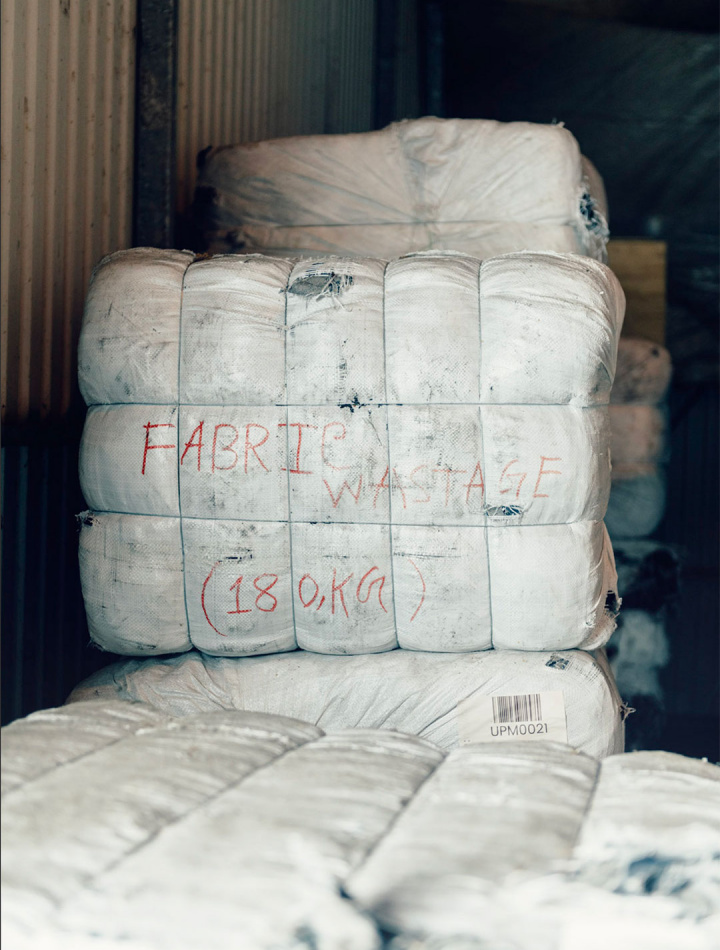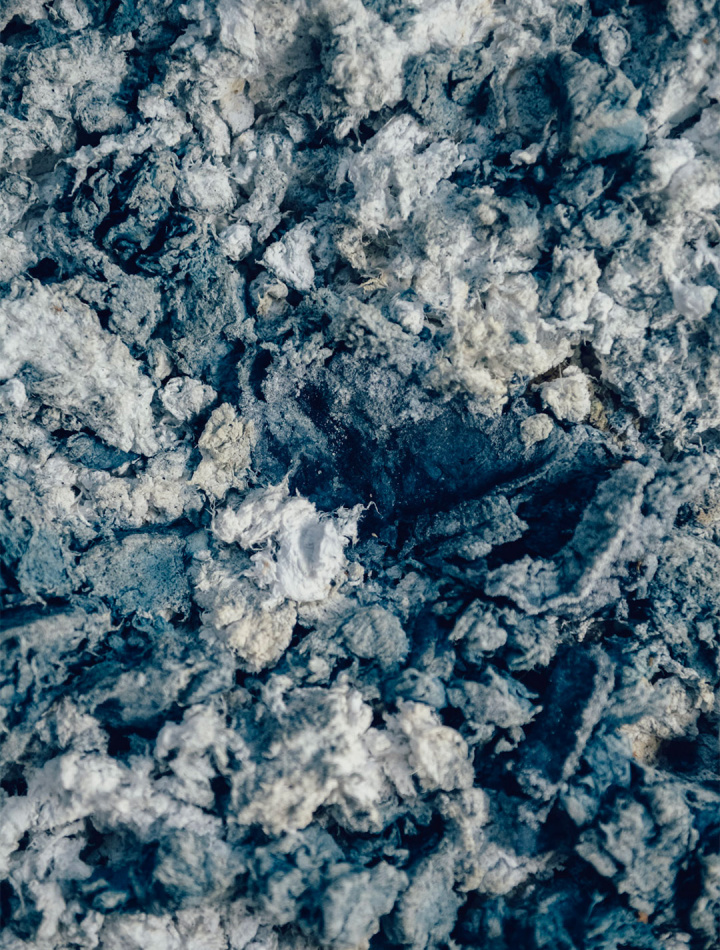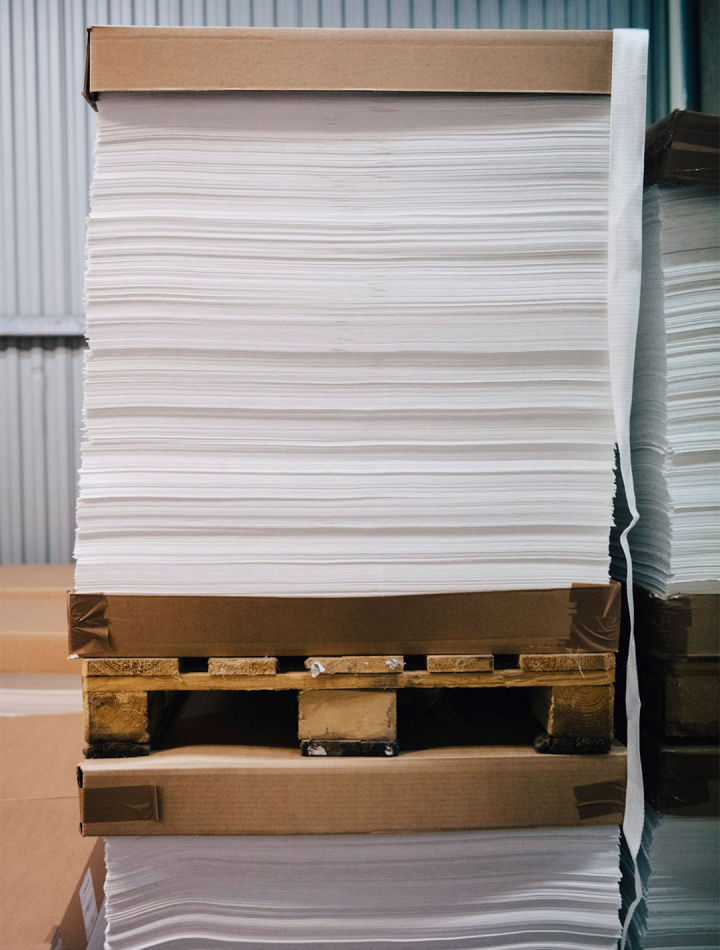FAQ
WHAT IS CIRCULOSE®?
CIRCULOSE® is a new kind of material made by recovering cellulose from worn-out textiles.
CIRCULOSE® is not a fiber, yarn or fabric. It is a 100% recycled raw material for textile fibers.
CIRCULOSE® is made from 100% discarded textiles, like that worn-out pair of jeans at the back of your closet. It is a ‘dissolving pulp’ that can be used to make viscose, lyocell, modal, acetate other types of regenerated fibers (also called man-made cellulosic fibers).
These fibers are then spun into yarns, woven or knitted into fabrics and finally cut and sewn into new high-quality textile products.
The only difference with CIRCULOSE®-based textiles is that they are made from textile waste instead of new cotton, oil or wood.
HOW IS CIRCULOSE® MADE?
Our recycling process works like this:
1. We take in discarded textiles like clothes that can no longer be resold or used, or production waste. We prefer cotton fabrics because they contain a lot of cellulose.
2. The clothes are shredded, de-buttoned, de-zipped, de-colored and turned into a slurry. Contaminants like polyester are taken out. What remains is cellulose –a biodegradable organic polymer that cotton, trees and most green plants on earth are made out of.
3. The slurry is dried to produce sheets of pure CIRCULOSE®. We package the sheets into bales and ship them off to be made back into virgin quality textile fibers by fiber producers.
4. Brands design and produce new clothes using fibers made from CIRCULOSE®.
5. Loop closed.
WHERE CAN I BUY PRODUCTS MADE FROM CIRCULOSE®?
Currently, viscose made with CIRCULOSE® is used by a growing number of fashion brands, including A. Roege Hoeve, Ganni, H&M, Levi’s, Triarchy, & Other Stories, and COS. You can also find products made from CIRCULOSE® at select retailers and online marketplaces or our website listing
DO YOU SELL FIBER, YARNS, FABRICS OR GARMENTS?
No. We sell CIRCULOSE® as pulp by the tonne. Our customers and partners make fibers, yarns, fabrics and garments from CIRCULOSE® in the regular fashion value chain.
That said, we often help brands and designers connect with value chain partners that sell products made with CIRCULOSE®.
WHAT IS THE BLEND LEVEL OF CIRCULOSE® IN VISCOSE FIBERS?
Fiber producers can choose the amount of CIRCULOSE® to blend into their fiber production. Producers blend wood pulp with CIRCULOSE® pulp. Typically with FSC-certified wood pulp.
DOES CIRCULOSE® NEED TO BE BLENDED WITH VIRGIN FIBERS?
No. Fibers made from CIRCULOSE® are equivalent to virgin fibers in applicability and quality. They can be used on their own or in a blend with other fibers, depending on preference.
This is really the key to our innovation since traditional textile recycling technologies have been limited in the quality that’s achievable. With traditional recycling the yarn is often too weak and feels and looks too different from virgin fibers.
WHAT IS THE QUALITY OF FABRICS MADE FROM CIRCULOSE®?
Fabrics and fibers made from CIRCULOSE® are indistinguishable from virgin man-made cellulosic fibers and fabrics. With CIRCULOSE® inside their products, brands and designers never have to compromise on quality or design.
But don’t take our word for it. Levi’s® used CIRCULOSE® for their iconic 501 denim, stating “they’re your classic pair of 501s.”
HOW IS VISCOSE MADE WITH CIRCULOSE® DIFFERENT FROM TRADITIONAL VISCOSE?
The production process for viscose or other manmade cellulosic fibers (MMCF) made with CIRCULOSE® is similar to that used for traditional viscose. Traditional viscose and MMCFs use virgin wood pulp to create its fiber. CIRCULOSE® can replace that wood pulp, so the MMCF is now partially made with recycled textiles.
Additionally, CIRCULOSE® is produced using renewable energy sources, such as hydropower, which reduces its carbon footprint.
HOW IS CIRCULOSE® DIFFERENT THAT OTHER INNOVATIVE MATERIALS?
CIRCULOSE® is a Next Generation material that is made with one feedstock ingredient: cellulosic-rich textile waste. It is currently produced at industrial scale in our Renewcell 1 facility in Sundsvall, Sweden that produces 60,000 tons per year and is ramping up to 120,000 tons.
CIRCULOSE® is further differentiated from other materials as it:
Only uses textiles as a feedstock (not other cellulosic materials like cardboard, wood)
Produced in an industrial scale facility, not in a pilot lab
Is implemented in globally available commercial collections created by fashion brands
Is available through 100+ members through the CIRCULOSE® Supplier Network
As a pulp, it is used as feedstock for viscose, modal, lyocell and acetate fibers
Fibers made with CIRCULOSE® are now commercially available in viscose staple and filament
WHERE CAN I SOURCE CIRCULOSE® FROM?
If you are a brand, textile mill, or yarn spinner please check out our CIRCULOSE® Supplier Network for a list partners here.
WHAT IS THE CIRCULOSE® SUPPLIER NETWORK?
The CIRCULOSE® Supplier Network (CSN) is made up of a group of leading yarn and textile producers who are helping to make fashion circular. These early adopters are unique in the marketplace as they are the first to access CIRCULOSE® volumes.
By joining the CSN, members are committing to the continuous development of circular solutions and are democratizing more sustainable textiles and end-products. With the CIRCULOSE® Supplier Network, there is now a steady supply of RCS certified, CIRCULOSE® available.



